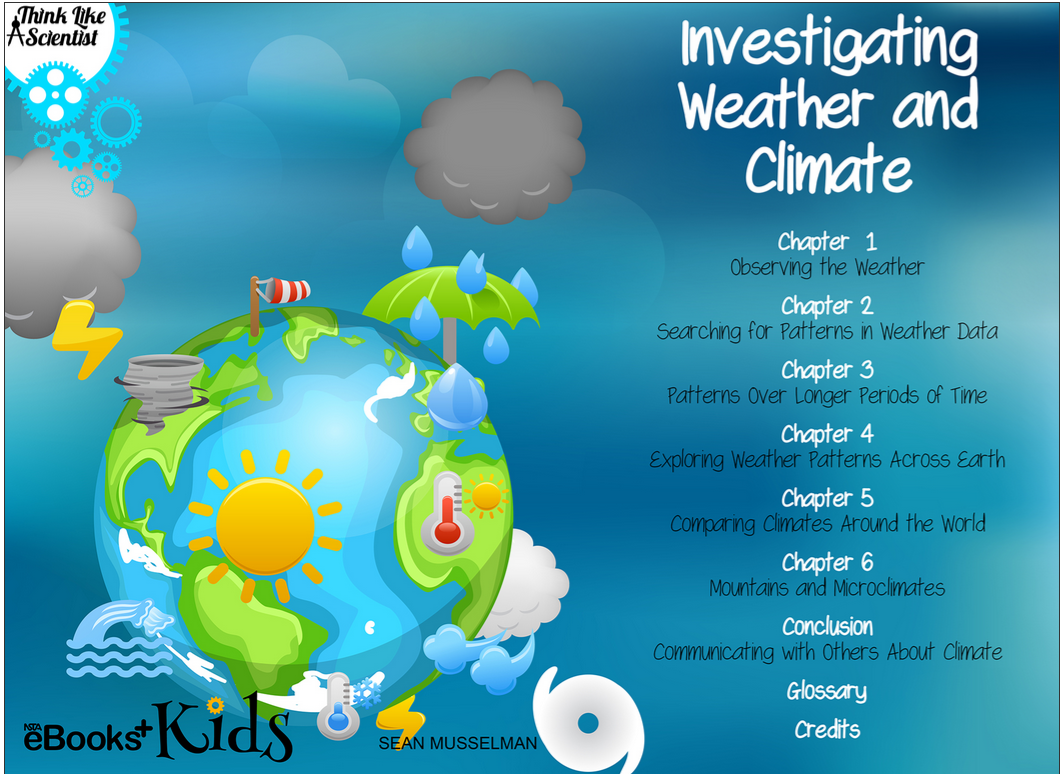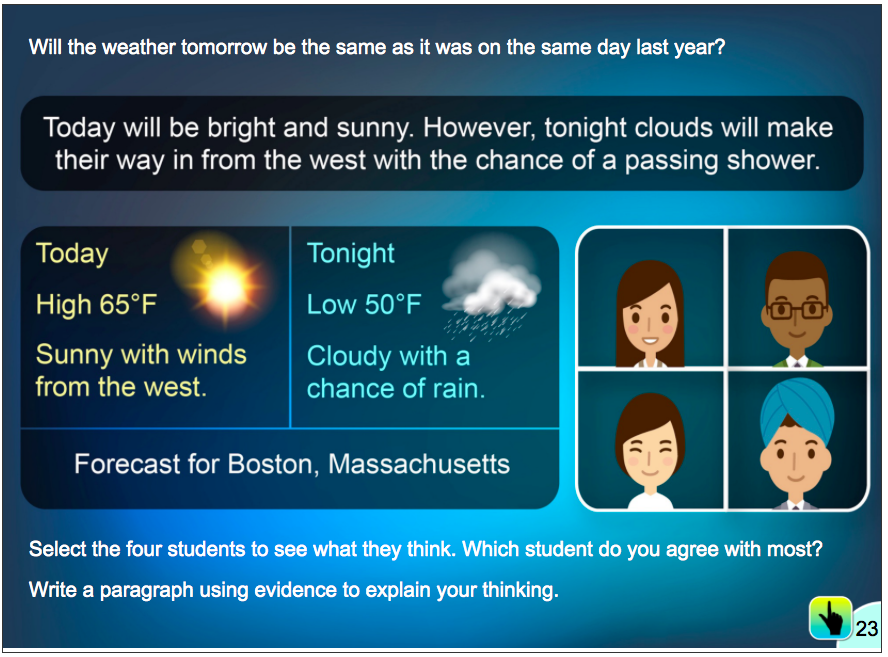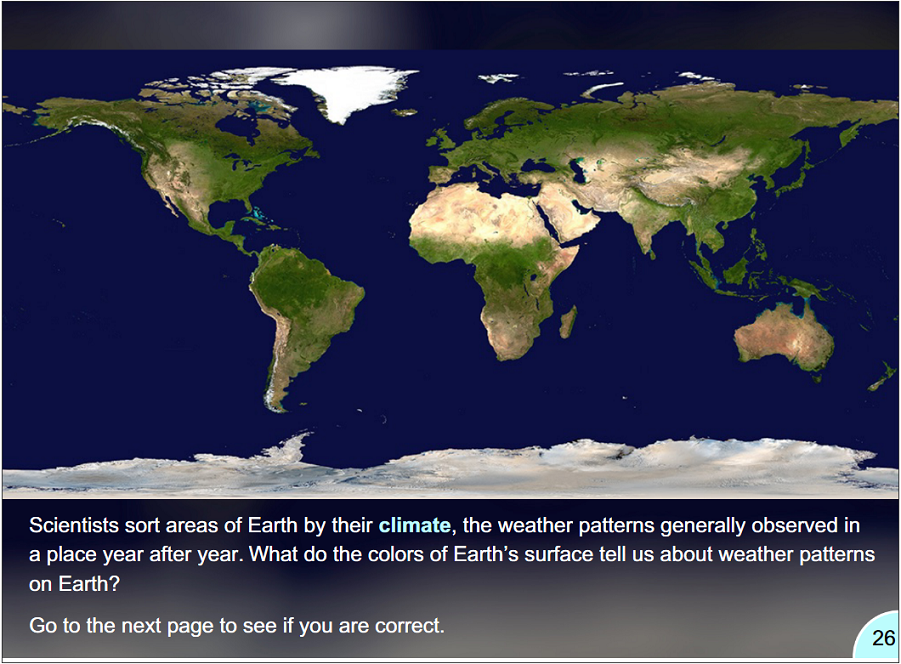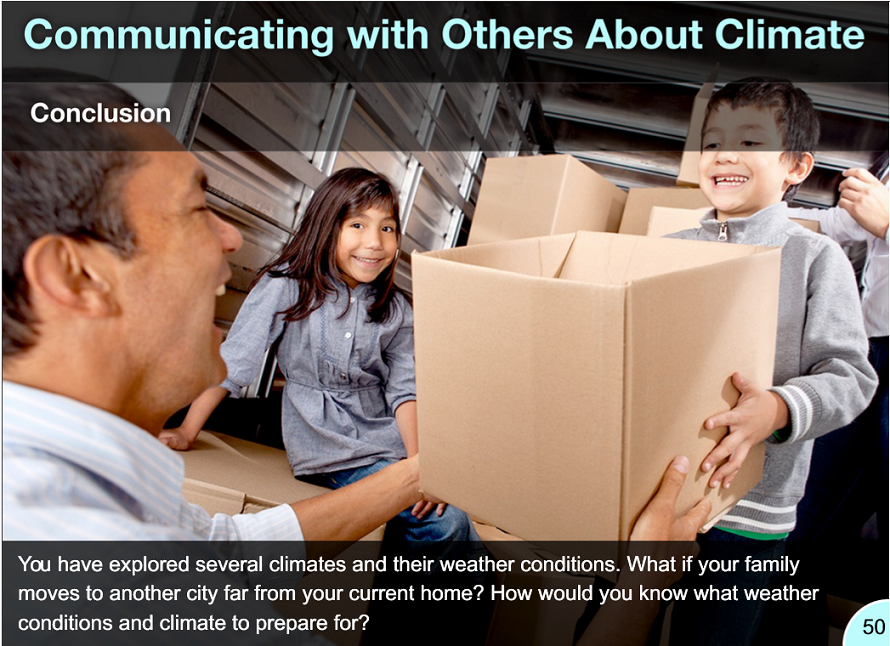Elementary | Daily Do
How Do We Find Patterns in Weather?

Crosscutting Concepts Disciplinary Core Ideas Earth & Space Science Is Lesson Plan Literacy NGSS Science and Engineering Practices Three-Dimensional Learning Elementary Grade 3
Welcome to NSTA's Daily Do
Teachers and families across the country are facing a new reality of providing opportunities for students to do science through distance and home learning. The Daily Do is one of the ways NSTA is supporting teachers and families with this endeavor. Each weekday, NSTA will share a sensemaking task teachers and families can use to engage their students in authentic, relevant science learning. We encourage families to make time for family science learning (science is a social process!) and are dedicated to helping students and their families find balance between learning science and the day-to-day responsibilities they have to stay healthy and safe.
Interested in learning about other ways NSTA is supporting teachers and families? Visit the NSTA homepage.
What Is Sensemaking?
Sensemaking is actively trying to figure out how the world works (science) or how to design solutions to problems (engineering). Students do science and engineering through the science and engineering practices. Engaging in these practices necessitates that students be part of a learning community to be able to share ideas, evaluate competing ideas, give and receive critique, and reach consensus. Whether this community of learners is made up of classmates or family members, students and adults build and refine science and engineering knowledge together.
Introduction

"What's the weather like today?" Most of us think about the weather every day. It informs the choices we make, like what to wear and how we're going to get to school, work, or the store (walk, bike, take the bus, etc.). We might not notice it, but we think about climate a lot, too. We may make a plan to visit someplace new at a particular time of year to help ensure we'll experience the weather we want, or we may wait excitedly for warm months to swim and play outside.
In today's task, How Do We Find Patterns in Weather?, students and their families read the NSTA e-Book Thinking Like a Scientist: Investigating Weather and Climate, which engages them in science and engineering practices and the use of patterns as a thinking tool (crosscutting concept) to figure out science ideas about weather and how patterns of weather determine the climate of an area.
Preparation
Before you invite your students to read aloud or read along with you, take a few minutes to become familiar with the e-Book and suggested supporting resource(s).
STEP 1
Watch the video (above) for guidance on how to best use the Think Like a Scientist: Investigating Weather and Climate e-Book with your students.
STEP 2
Open the Think Like a Scientist: Investigating Weather and Climate e-Book. You may want to pause here and read the e-Book to identify pages with (a) big ideas you want to emphasize through questioning and/or discussion and (b) embedded tasks that will require students to develop new knowledge and skills to complete.
STEP 3
Open the Student Weather & Climate Notebook. You may choose to print this notebook, but it is not necessary. Students and families can respond to the Weather & Climate Notebook prompts—share their ideas and record data— on blank or scrap paper.
Now you're ready to begin today's task!
Engaging Students With the e-Book
Start by looking at the cover of the e-Book. Ask students, "Which pictures on the cover make you think about weather?" Give students time to think before asking them to respond. Support students' thinking by asking them to create a list of the pictures that make them think about weather. Younger students may want/need to quietly touch the pictures while they're thinking.
Ask students to share their list of pictures that make them think about weather and tell why each picture is on the list. Look for opportunities to help students notice categories as they emerge.
- Hurricanes, thunderstorms, and tornadoes are examples of severe weather; rain and snow are types of precipitation; hot (red thermometer) and cold (blue thermometer) describe temperatures.
Don't worry if your students don't see categories yet; they will have many other opportunities to do so.
Now that students are thinking about weather, ask them to describe the weather where they are today. Use the pictures on the e-Book cover to prompt them to add to their description. For example, "I see clouds and sun on the cover. What might you add to your description?" and "What about this flag [wind sock] here? What is that telling us about weather?" Record students' observations (see page 5 in the student notebook) to create a class or family description of today's weather. You'll return to this description later.
Before returning to the book, tell your students, "We've made a lot of observations about weather. Do you have any wonderings about weather?" Record all student questions (alternatively, ask students to write their questions on a sticky note or scrap of paper and post them all in one location).
Start reading the e-Book. The book has many places to stop and ask questions, engage in the practice of analyzing and interpreting data (interacting with data tables and visual representations of data), and build ideas together through discussion. The following suggestions are some examples of how you can use this e-Book.

Page 3. Have students compare the weather, describing words on the page with the words they used to describe today's weather. Ask, "Are there any words from this page that you'd like to add to our class (or family) description?" As students use the words to describe the scenes in the e-Book, ask, "Are there other words you would use to describe this scene? How would adding that word make the description of weather better?"

Page 5. After students match each weather instrument with its proper name, say, "The anemometer measures wind speed. What did we see on the cover that also measures wind speed?" (wind sock). Next, show the Weather Station video below.

Page 23. The prompt on this page, "Will the weather tomorrow be the same as it was on the same day last year?", is designed to formatively assess students' understanding of the relationship between weather and climate. Give students independent thinking time to choose the student they most agree with and record their thinking (they can use words, pictures, symbols, graphs, etc.). See guidance below for providing feedback to your students based on the choices they make.
| Table 1 | ||||||||||||
|---|---|---|---|---|---|---|---|---|---|---|---|---|
|

Page 26. Before students read the text on the page, ask them to use patterns as the thinking tool to observe Earth's surface. Ask, "How many different types of land cover did you find?"
- Examples of student responses might include white (snow), brownish-green, dark green, light green and brown (or some combination of these).
Then ask, "What do you think the colors tell us about the weather patterns at different places on Earth? For example, what might the weather pattern be for the dark green areas?"
To facilitate this conversation, give students the following prompts:
Speaker: I think ____ because ____ .
Responder: I hear your say ____ . (to honor speaker's ideas) I agree/disagree because ____ .

Page 50. Ask your students to describe the climate where they live: "How would you describe the usual weather during the winter months? The summer months? Do we have a wet or dry season?" (See student notebook, page 7.) If students are interested in knowing the average monthly temperatures and precipitation amounts where they live, The Weather Chanel is one place you can find climate graphs like the ones presented in this e-Book. Enter your city, then choose "Monthly" from the ribbon near the top of the page. Ask students to compare the climate graph for their city with the climate graphs for cities shared in the Comparing Climate Around the World chapter of the e-Book (pages 28– 45). Ask, "Which city in the e-Book has a climate graph similar to ours? Which climate zone is that city in?"
When you finish reading the e-Book, return to the list of student wonderings you recorded at the beginning of this task. Ask students to identify the questions they can now answer. Note the questions that are left. Ask, "Which question should we try to answer next? How might we investigate?"
If you're not sure what to do next, the How do we find patterns in weather? collection (see below) has resources to support you and your students' continued investigations of weather and climate.
NSTA Collection of Resources for Today's Daily Do
NSTA has created a How do we find patterns in weather? collection of resources to support teachers and families using this task. If you're an NSTA member, you can add this collection to your library by clicking ADD TO MY LIBRARY, located near the top of the page (at right in the blue box).
Check Out Previous Daily Dos From NSTA
The NSTA Daily Do is an open educational resource (OER) and can be used by educators and families providing students distance and home science learning. Access the entire collection of NSTA Daily Dos.






